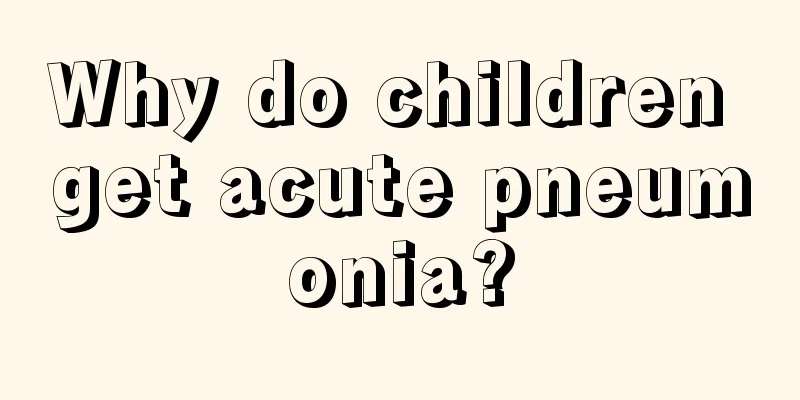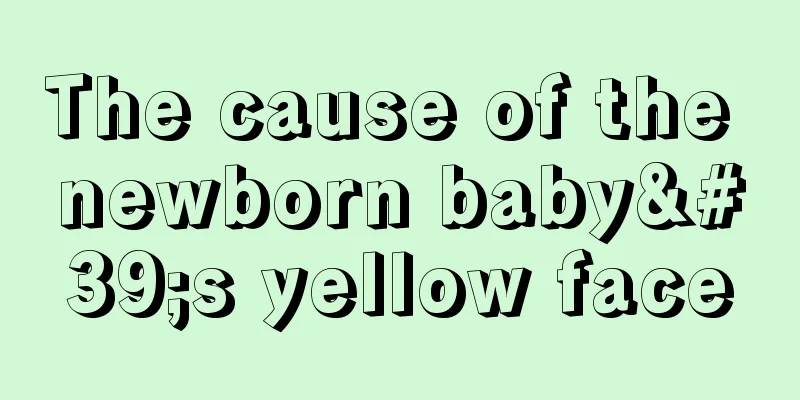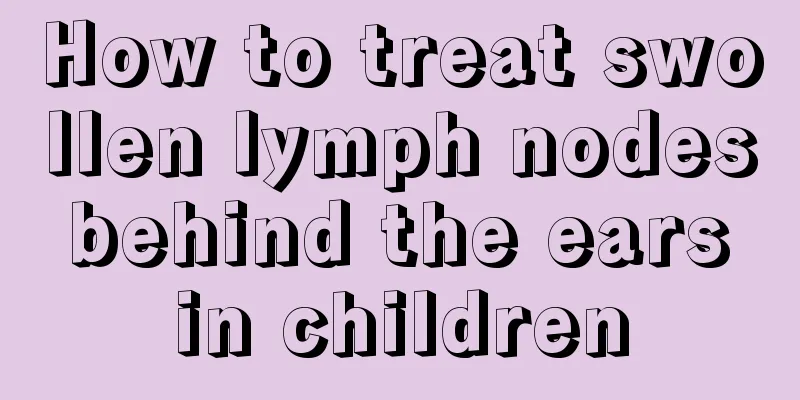Why do children get acute pneumonia?

|
Children have many illnesses. They have just come into this world and have not yet adapted to life, so those of us who do this have to take good care of the babies. Pneumonia is a common disease among children. In fact, pneumonia is not a serious disease, but if it is acute pneumonia, it is difficult to deal with. Why do some babies suffer from acute pneumonia? Pathophysiology and pathogenesis (1) Infection and poisoning can cause high fever, lethargy, loss of appetite, and damage to other organ systems. When inflammation spreads down through the bronchi and bronchioles to the alveoli, pneumonia forms. At this time, the bronchial mucosa is often inflamed and edematous, which causes the bronchial lumen to narrow. The alveolar walls are thickened due to congestion, and the lungs are filled with inflammatory exudates, which hinder ventilation and increase gas diffusion resistance. The accumulation of secretions in the small bronchial lumens, coupled with poor cilia development and activity, and weak ability to clear secretions, make the small bronchial lumens narrower or even blocked, causing obstructive emphysema or localized atelectasis in the lungs, further aggravating ventilation and gas diffusion disorders, and finally leading to hypoxia and carbon dioxide retention, affecting the body's metabolic process and the functions of important organs. (B) Hypoxemia When air enters the alveoli and oxygen diffusion from the alveoli to the blood is impaired, the oxygen content in the blood decreases, the arterial oxygen partial pressure (PaO2) and the arterial oxygen saturation (SaO2) decrease, and SaO2 is lower than 85%, which is called hypoxemia. When the reduced hemoglobin is >5.0g/dl (50G/L), cyanosis occurs. If the excretion of carbon dioxide is also severely impaired, respiratory failure is likely to occur. (III) Hypoxemia and carbon dioxide retention in the cardiovascular system can cause reflex contraction of the pulmonary arterioles, increase the pulmonary circulation pressure, form pulmonary hypertension and increase the right heart load. In addition, pathogen toxins can act on the myocardium and cause toxic myocarditis. Pulmonary hypertension and toxic myocarditis are the main risk factors for heart failure. Severe pneumonia may cause microcirculation disorders. Due to severe hypoxia, acidosis, pathogen toxins, etc., they can cause spasm of micro-arteries, blood stasis, slowed blood flow, opening of arteriovenous shunts, obstruction of material exchange between blood and cells, cellular hypoxia, and inability to excrete carbon dioxide. In the late stage, capillaries dilate, blood flow slows down, arteriovenous shunts open, the exchange of substances between blood and cells is hindered, cells are deprived of oxygen, and carbon dioxide cannot be excreted. In the late stage, capillaries dilate, blood flow stagnates, fluid in blood vessels seeps into tissue spaces, tissue edema occurs, blood is concentrated, effective blood circulation volume decreases, the amount of blood returning to the heart decreases, and cardiac output decreases, leading to shock or worsening of heart failure. Microcirculatory disorders can also cause shock. (iv) Hypoxia and carbon dioxide retention in the nervous system can cause cerebral capillary dilation, increase the permeability of the blood-brain barrier, and impair brain cell metabolism. The sodium pump fails, and sodium cannot be excreted while potassium is retained, resulting in water and sodium retention in brain cells, causing cerebral edema and even brain herniation, which can inhibit the respiratory center, cause central respiratory failure, and aggravate pneumonia. We must be aware of the symptoms of acute pneumonia in children. Otherwise, even if our children are suffering from acute pneumonia and we don’t know it, it will delay the treatment of the children’s illness. As long as we are well prepared in normal times, we can avoid such things from happening. All parents in the world love their children. No one wants to hurt their children because of their ignorance, right? |
<<: Why is the baby's face red?
>>: Clinical manifestations of breath-holding spells in children
Recommend
Precautions for newborn vaccination
Newborn vaccination can help children prevent dis...
Parents should understand the symptoms of baby allergies!
A baby's body is relatively fragile and has l...
Is it good for children to eat kiwi fruit?
Due to the influence of family planning in today&...
Newborns cry after vaccination_Newborns cry at night after vaccination
I believe many people know that after a newborn i...
Is bronchopneumonia serious in newborns?
No matter what, children suffering from bronchopn...
What to do if the baby has diarrhea after drinking milk
Everyone knows that the stomach and intestines of...
What to do if your child has high uric acid
It is quite common for children to have high uric...
The child keeps complaining of stomachache
Children's physical health is one of the most...
Is it good for children to have canine teeth?
When children are growing teeth, they need a lot ...
Are children's fever patches effective?
Children have relatively poor immunity, so they a...
At what age is it normal for babies to start growing teeth?
Babies will grow teeth when they reach a certain ...
How to treat eczema in children? There are some tricks to get rid of eczema
Eczema is a common allergic, non-infectious, alle...
What are the methods for treating rhinitis in children?
The prevalence of rhinitis is gradually increasin...
What are the dangers of insufficient sleep for babies?
In today's society, the competitive pressure ...
Precautions for babies to eat sugar pills
The sugar pills we are talking about here are not...









